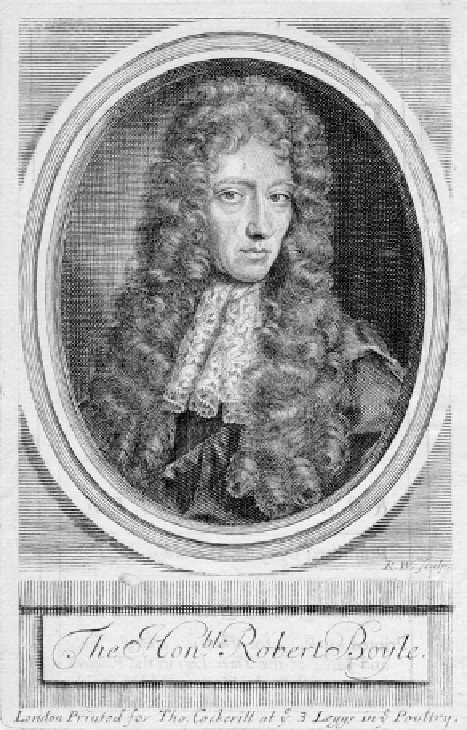Geoscience Reference
In-Depth Information
3.3.4. Thermosphere
In the
thermosphere
,temperatures increase with
increasing altitude because O
2
(g) and N
2
(g) absorb very
short, far-UV wavelengths in this region. Peak temper-
atures in the thermosphere range from 1,200 to 2,000
K, depending on solar activity. Air in the thermosphere
would not
feel
hot to the skin because the thermosphere
contains so few gas molecules. However, because each
gasmolecule in the thermosphere is highly energized,
the average temperature is high. Because molecular
oxygen and nitrogen absorb very short wavelengths in
the thermosphere, such wavelengths do not penetrate to
the mesosphere.
3.4. Equation of State
Pressure, density, and temperature in the atmosphere are
related by the equation of state. The
equation of state
describes the relationship among pressure, volume, and
absolute temperature for a real gas. The
ideal gas law
describes this relationship for an ideal gas. An ideal gas
is a gas for which the product of the pressure and volume
is proportional to the absolute temperature. A real gas is
ideal only when intermolecular forces are small, which
occurs when pressures are low enough or temperatures
are high enough for the gas to be sufficiently dilute.
However, under typical atmospheric temperature and
pressure conditions, the ideal gas law can reasonably
approximate the equation of state.
The ideal gas law is expressed as a combination
of Boyle's law, Charles's law, and Avogadro's law. In
1661,
Robert Boyle
(1627-1691), an English natural
philosopher and chemist (Figure 3.6), found that dou-
bling the pressure exerted on a gas at constant temper-
ature reduced the volume of the gas by one-half. This
relationship is embodied in
Boyle's law
:
Figure 3.6.
Robert Boyle (1627-1691). Edgar Fahs
Smith Collection, University of Pennsylvania Library.
volume of the gas. This relationship is embodied in
Charles's law
:
V
∝
T
at constant pressure
(3.4)
where
T
is the temperature of the gas (K). Charles's law
states that, at constant pressure, the volume of a gas
must decrease when its temperature decreases. Because
gases change phase to liquids or solids before 0 K,
Charles's law cannot be extrapolated to 0 K.
Charles is also known for his development of a
balloon filled with hydrogen gas [H
2
(g)]. On June
4, 1783, Joseph Michel (1740-1810) and
Jacques-
Etienne Montgolfier
(1745-1799) launched the first
untethered hot air balloon in a marketplace in Annonay,
southern France. The balloon was filled with air heated
by burning straw and wool under the opening of a
light paper or fabric bag. Prompted by this discov-
ery, the French Academy of Sciences asked Charles to
P
∝
1
/
V
at constant temperature
(3.3)
where
p
is the pressure exerted on the gas (hPa) and
V
is the volume enclosed by the gas (m
3
or cm
3
).
Boyle's law describes the compressibility of a gas.
When high pressure is exerted on a gas, such as in the
lower atmosphere, the gas compresses until it exerts an
equal pressure on its surroundings. When a gas is sub-
ject to low pressure, such as in the upper atmosphere,
the gas expands until it exerts an equal pressure on its
surroundings.
In 1787, French chemist
Jacques Charles
(1746-
1823; Figure 3.7) found that increasing the absolute
temperature of a gas at constant pressure increased the


Search WWH ::

Custom Search